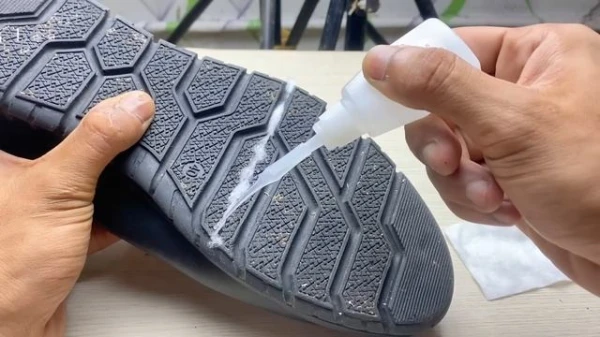
When the sole of your favorite shoes cracks, owners face the choice — spend money on expensive repairs or simply throw the pair away.
But don't rush, there is a simple life hack known among shoe repair masters that offers a quick and very durable way to temporarily restore the integrity of the sole using two simple components — universal glue and ordinary fine kitchen salt.
Why Use Salt for Sole Repair
This method is not a new discovery. Salt is used as a fine powdery material as a filler or catalyst for glue.
Just like baking soda, which is often used with super glue for instant polymerization and increased seam strength, salt here serves a dual purpose.
First, the salt crystals act as an internal framework — when the glue hardens, it envelops these crystals, forming a dense, almost stone-like layer inside the cracks. This significantly increases the volume of the adhesive material and its resistance to repeated bending loads.
Second, even when simply spread across the surface, fine salt helps the glue better adhere to the sole material, enhancing adhesion.
How to Repair a Cracked Shoe Sole
For a successful repair, you will need universal shoe glue (for example, "Moment"), fine kitchen salt, a toothpick or thin spatula, and a weight for fixation.
First, the damaged area must be thoroughly cleaned of any dirt, dust, and moisture.
A key step is degreasing the surface with acetone or alcohol, which will ensure maximum adhesion of the glue to the sole material.
Then, the glue is carefully applied inside the crack, trying to fill it deeper along the entire length of the rupture. While the glue remains liquid, a small amount of salt is poured into it, which is evenly distributed with a toothpick, ensuring it mixes with the glue.
Finally, the edges of the sole must be tightly compressed and fixed with clamps or a heavy object to ensure even and reliable adhesion without gaps.
The shoes should remain under load for twelve to twenty-four hours. The exact time depends on the glue used. During this period, the glue will fully polymerize, and the salt filler will form a strong structure.
This method works particularly well for small cracks (up to five centimeters) on soles made of rubber, polyurethane, or plastic.
However, this life hack is only a temporary measure and does not replace professional repair, especially in cases of deep ruptures, significant wear, or detachment of large pieces of material. The main advantage of the "salt" repair is the ability to quickly restore the wearability of the shoes, extending their lifespan by several weeks or even months in dry weather.















Leave a comment